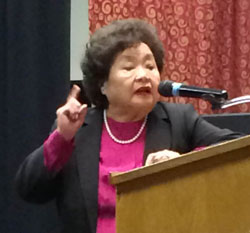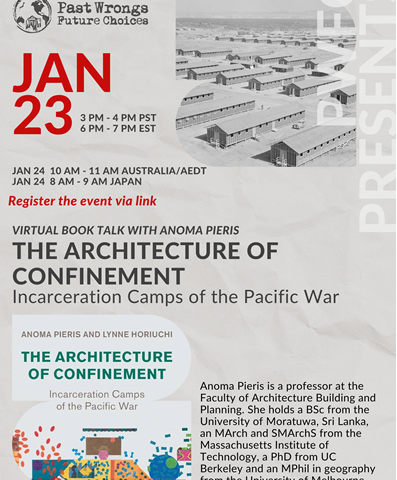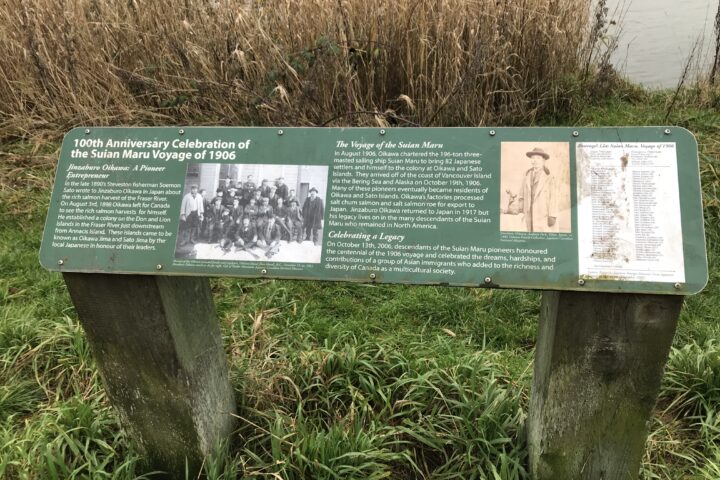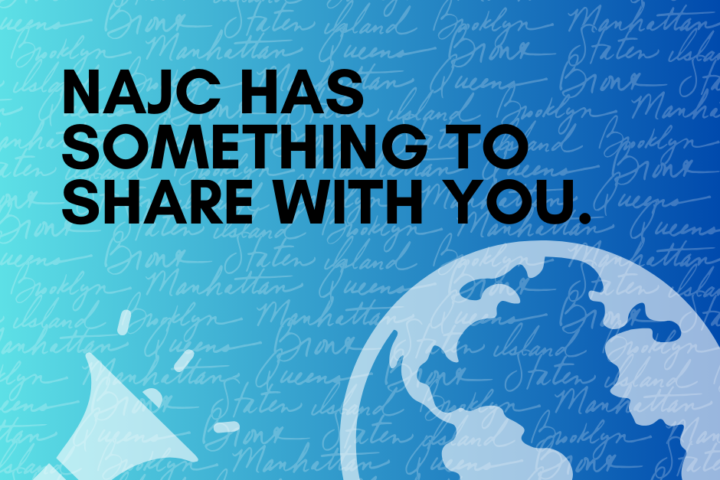
Photo credit: Kevin Okabe
by Kevin Okabe
This year’s National Association of Japanese Canadian’s (NAJC) Annual General Meeting (AGM) was hosted by the Victoria Nikkei Cultural Society. Victoria had never acted as host for the NAJC AGM (at least since the post-war days), so it is really tremendous to see such a small community as Victoria band together to host this event during the September 25-27, 2015 weekend.
National Association of Japanese Canadians Annual General Meeting
The NAJC reported on its various activities during the past year. Some of the highlights included:
- Participation and representation from a number of new organizations including Regina, Montreal and Nanaimo as well as the Nikkei National Museum
- Detailed constitutional and by-law review.
- Growth and subsequent decline in the investment funds as a result of recent market conditions, resulting in a total investment pool of over $4.5 million as of September 2015.
- Successful organization of another Japanese Canadian Young Leaders Conference;
- Continued expansion of the community development program which featured funds for member organizations to support a variety of local projects and initiatives;
For the coming year, a deficit budget was proposed in order to continue the initiatives and projects that have been launched during the past year. Priorities for the coming year include:
- Extension of the Executive Director role (Ken Noma) on a part time basis;
- Establishment of a community revitalization fund that would provide one-time grants to communities to support their renewal and rejuvenation;
- Continued funding to individuals and organizations through the SEAD, Cultural Development and Community Development funds;
- Ongoing participation in the Landscapes of Injustice project; and
- Continued support of the work of the Young Leaders, Heritage and Human Rights committee activities.
It was also announced that Calgary will play host to the 2016 NAJC Annual General Meeting. The 2017 meeting will be held in Ottawa, to coincide with the 150th anniversary of the formation of Canada.
Landscapes of Injustice Update
Background was provided about the significant Landscapes of Injustice project by Jordan Stanger-Ross, Project Director. The Landscapes of Injustice is a joint partnership of a number of institutions including universities, Japanese Canadian organizations, museums and historical societies. Full information about this project can be found at the following website: http://www.landscapesofinjustice.com
Landscapes of Injustice is dedicated to recovering and grappling with the forced sale of Japanese-Canadian-owned property. The team asks why and how the dispossession occurred, who benefited from it, and how it has been remembered and forgotten, in subsequent decades.
The personal belongings of Japanese Canadians were auctioned off as they were being subjected to theft, damage and destruction as deserted properties were looted by opportunists. The sale of the properties incited outrage on behalf of the Japanese Canadians that owned these possessions.
We also heard from Hikari Rachmat, the 2015 recipient of the Hide Hyodo-Shimizu Scholarship, who described how he became interested in the project, and the work that he was during on the project during the past year. Hiraki was one of the participants of the 2014 Japanese Canadian Young Leaders ‘conference as well.
The Community Council is made up of representatives from the Japanese Canadian community (Ottawa, Winnipeg, Toronto and British Columbia), whose mandate is to ensure that the stories of the dispossession are included and accurately portrayed.
Preserving the Past
Lisa Uyeda and Linda Reid from the Nikkei National Museum and Cultural Centre provided some interesting information on the how to preserve the past.
The first part of the seminar covered the handling of old photographs:
- Use gloves when handling photographs.
- Remove photographs from albums that have self adhesive backing or glue as these are damaging to photos.
• Mint wax-free dental floss (e.g. GUM EEZ-THRU) can also be used to remove photographs from albums.
• Avoid bending photographs when removing them from albums. Album pages instead can be bent.
- Mylar plastic sleeves can be used to store photographs, as well as archival-safe photographic sleeves (e.g. Print File Archival Preservers) and store file folders in hollinger boxes or 3 ring binder boxes.
- Acid-free paper should be used between photos and album pages.
- Acid-free/lignin-free sleeves can be used for photographs and documents that come in a variety of sizes. Buffered is preferred, and thumb-cut is an option. These can also be used for negatives.
- If you want to label photographs, use pencil with soft graphite (e.g. 58 pencil). Do NOT use mechanical pencils.
- Do not use document sleeves or regular envelopes to store photos.
- Remove metal clips and fasteners as they will rust over time.
The next part of the seminar highlighted the work of the Nikkei National Museum and Cultural Centre. The organization employs two professional staff, and has collaborated with other organizations across the country to share expertise, apply for grants and carry out projects.
A search of the collections that have been compiled can be done at the following links:
Retention of Adult Volunteers and Youth
Liz Bean and Kyla Fitzgerald (Intercultural Association of Victoria) conducted an information session on volunteerism.
Keys to volunteer retention include:
- Creating a Sense of Purpose
People want to feel connected to an organization. They need to feel alignment with their sense of values. Volunteers should be educated about the organization (vision, mission, values, and goals). In addition, connections need to be made at a personal level with each volunteer.
Volunteers should be made to apply for positions – capture past experience, skills. Resumes are also useful to gather. In addition, there should be a detailed description of each volunteer position or role. Ideally, volunteers should also be interviewed to get a better sense of the volunteer (skills, interest, knowledge, education, expertise) so that they can be put in a position that would be a good fit for the volunteer. This positions the volunteer to contribute in a meaningful, enjoyable and fulfilling way. Happy volunteers are productive volunteers and help get the job done.
- Recognize Volunteers
Volunteers need to feel appreciated and valued – this is key to volunteer retention. Volunteer appreciation events could be held each year. These events can be used to recognize the longevity of volunteer service, as well as to welcome new volunteers. Personalized thank you cards can also be very effective in expressing appreciation. Saying thank you can be very impactful.
- Flexibility
Provide flexibility to volunteers so that they can make contributions at the times that they are most able to.
There needs to be greater focus on engaging youth within our organizations. This does not only mean having youth representatives on a board or having youth volunteering within the organization itself. Youth engagement requires investment, but the benefits can be very beneficial over a long period of time.
- Ensure that the entire board is onside with the active engagement of youth.
- Identify what type of youth volunteers that you would like to engage (high school, university, international students, etc.) The age ranges associated with youth volunteers could be very broad.
- Is your schedule youth volunteer friendly? There may be a need for flexibility.
- Need to build successful, strong, committed relationships with youth that are actively maintained.
- A strong on-line presence is required to maintain engagement with youth. Websites, Facebook and Twitter are also important ways to access youth.
- Youth volunteers do not necessarily having to be placed in youth specific roles. Make connections between generations. Parallel experiences can really help cement the bond with youth. Mentoring can also be really important.
- Communication is key – communication channels need to be kept open. Need to follow up on a regular basis and keep the relationship going. Allow youth to ask questions and provide feedback regularly.
Addressing Issues Related to Aging in the Japanese Canadian Community
Aging issues were the subject of the next seminar, featuring Karen Kobayashi (Centre on Aging – University of Victoria) and C. Keiko Funahashi (Nikkei Seniors Health Care & Housing Society).
Some trends that are impacting the landscape include the aging of the overall Canadian population and the increasing diversification of the Japanese Canadian older population. There is increasing pressure to offload responsibilities to the Japanese Canadian community as governments struggle with economic uncertainty by reducing or eliminating funding or programs.
There are various ways to respond to the needs of an aging population including:
- Housing – Momiji Seniors Centre opened in Toronto in 1993 and Nikkei Home opened in Vancouver in 2000 to gear towards the housing needs of a population that is concentrated in those two centres (80% of the Japanese Canadian community)
- Health Care and Social Support and outreach services – Prevention programs such as Sukoyaka Clinic, where a secondary care doctor can support the primary care physician, as well as Outreach programs (KuiDoRaku – for individuals without symptoms of dementia and Iki Iki program – community based and dementia friendly program)
- Activities programs – programs that are focussed on wellness (50’s and 60’s)
Institutions such as Nikkei Home and New Sakura-so have been proactive in reaching out to academic institutions to support research.
Continual research and donations required for:
- Chronic disease self management (diabetes, heart disease)
- Dementia care (residential and community based)
- Caregiver support
The future vision is to develop an integrated seniors’ centre. Of course, for centres with a smaller population of seniors may not have the population size, funding or expertise to support the creation of such a centre, so alternative means of service delivery or partnerships with organizations that can service seniors’ needs may need to be identified.

Banquet
The Victoria community then hosted an evening reception, which allowed delegates to meet members of the Victoria Japanese community. Highlights during the event included:
- Awarding of the Art Miki National Leadership Award (formerly the NAJC National Award) to Judge Maryka Omatsu. Maryka was active in the Japanese Canadian community’s struggle for redress, as a member of the National Association of Japanese Canadians’ negotiation team. Her book, “Bittersweet Passage” documented that history and won several prizes.
- Awarding of the NAJC Merit Award to long time local and national Japanese Canadian community volunteer Dick Nakamura.
- A passionate and emotional speech was delivered by the keynote speaker, Hiroshima atomic bomb survivor Setsuko Thurlow. She recanted with graphic detail the horrors of what occurred during that fateful day when the bomb fell overhead. She also reiterated her key message about the need for global disarmament, and the need for all of us to continue to pressure governments to help secure the safety and security of the world for generations to come.
We were entertained by some wonderful performances of song, dance and shamisen from local area performers and children.
Japanese Canadian Young Leaders Conference (JCYLC)
Lisa Schoenhofer (Chair YL), Erica Isomura (Victoria Young Leaders) reported on the activities of the Japanese Canadian Young Leaders group. Four conferences featuring Japanese Canadian Young Leaders have been held since 2012. A total of 28 young leaders attended the Winnipeg conference, which was similar in size to the number that attended the Vancouver conference in the previous year. Social media has been main way that connections have been fostered between young leader conference attendees between events.
Some needs that have been identified include:
- Developing active leadership in the community through mentoring and inclusion;
- Equipping youth with tools and funds needed to implement plans;
- Flexibility to change programming and events, minimizing bureaucracy/politics;
- Creating strategic alliances;
- Funding to support continued JCYLC initiatives in the future, including sustainable funding.
An impactful portion of the JCYLC presentation featured personal testimonials that were conveyed via a digital video which identified the impact that the series of conferences has had on the attendees. The results from the conference are often intangible, relating to the individual attendee’s exploration of their identity, their connection with the Japanese Canadian community of the attendees and their personal development. A further point was made to suggest that we should not just seek young leaders’ involvement into our community activities, events and boards, but we should strive to see how we can support the initiatives undertaken by the young leaders themselves. As these young leaders shape their perspectives and views of their own identity, the community as a whole stands to benefit from their contributions, creativity and leadership in the years to come.
Updates on the activities of the Japanese Canadian Young Leaders can be found at their website:
http://jcyoungleaders.najc.ca/
Consul General Okada
Consul General of Japan in Vancouver, Seiji Okada, has been deeply interested in the history of Japanese Canadians and the history of the Consulate-General office in Vancouver. As a result of his research into the matter, he uncovered interesting documents dating back to the actual opening of the Consulate-General’s office in Vancouver in the late 1800’s, including references that seemed to have initially put this office in Victoria. He also provided some photographs from the early 1900’s and identified the chronology of events that led to the 1907 riots.
NAJC Spotlight on New Member Organizations
This seminar shed light on the three Japanese Canadian organizations, including:
- Japanese Canadian Cultural Centre of Montreal (created in 1976, with 200 members) – Michio Hirai identified that this long-standing organization is very active with its centre, which also organizes a number of major activities during the year, including the summer matsuri, winter mochitsuki, bake/craft sales and bazaar.
- Central Vancouver Island JC Society in Nanaimo (also known as the 7 potatoes society, as a play on the words Nana (seven) and Imo (potatoes). Eiko Eby recalled the history of the organization, which was created in 1989 and hosts six events a year (20-30 families involved, 58 memberships). They are challenged due to the relatively small size of the community and membership and the limited amount of funds available.
- Regina Japanese Canadian Club – Andre Boutin-Maloney described how Regina is a small community comprised of a number of smaller, diverse community members (new immigrants, international students, multi-generational families, intermarried families). They recently hosted “A Call for Justice” traveling exhibit which involved a crowdfunding campaign which raised the $5,900 required to host the exhibit. As a result of this event, there seems to be revitalization in the community and an increase in interest in the organization.
History of the Japanese Community in Victoria
A very comprehensive history of the Japanese arrival to Canada (and more specifically to Victoria) was provided by historians Ann-Lee and Gordon Switzer. The history, accompanied by photographs and stories from the era, provided us with a glimpse of what life was like in the late 1800’s and early 1900’s.
Based on their research, Ann-Lee and Gordon Switzer suggest that it was Kisuke Mikuni that most likely the first Japanese immigrant to Canada. Not only did he arrive in Canada, but he remained in Canada until his death. This was contrary to previous claims that Manzo Nagano was the first Japanese immigrant.
The Switzer’s published their book, “Gateway to Promise: Canada’s First Japanese Community” in 2012. They also followed this up with a subsequent publication that was launched and released at the end of the session entitled Sakura in Stone: Victoria’s Japanese Legacy. Both publications will be made available to members of the CJCA through the CJCA Library.
Conclusion
This NAJC AGM featured some spirited debates and interesting commentary. However, the real insights came from the sessions and seminars that followed the AGM. The subject matter that was presented was very pertinent to many of the communities across Canada. The presenters were absolutely tremendous– showing deep expertise in their fields coupled with excellent presentation skills. The passion that they showed for the subjects that they were talking about was very inspiring, and the comments and suggestions that they offered were extremely relevant to the issues faced by communities today. I think I can speak on behalf of all attendees – this was definitely an AGM for the ages!



